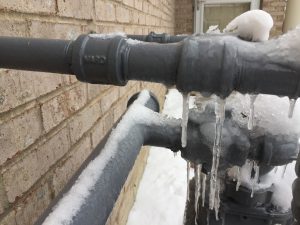Essential Strategies for Avoiding Frozen Pipes in Winter
Essential Strategies for Avoiding Frozen Pipes in Winter
Blog Article
How do you feel in regards to How To Avoid Freezing Pipes?

Cold weather can damage your pipes, especially by freezing pipelines. Right here's exactly how to avoid it from occurring and what to do if it does.
Introduction
As temperatures drop, the risk of icy pipelines boosts, potentially leading to pricey fixings and water damages. Comprehending how to stop frozen pipes is critical for house owners in chilly environments.
Comprehending Icy Pipes
What triggers pipes to ice up?
Pipelines ice up when revealed to temperatures below 32 ° F (0 ° C) for extended durations. As water inside the pipes ices up, it expands, putting pressure on the pipe wall surfaces and potentially causing them to burst.
Threats and damages
Icy pipelines can cause supply of water disruptions, building damage, and costly repair services. Ruptured pipes can flood homes and create comprehensive structural damages.
Indications of Frozen Water Lines
Identifying icy pipelines early can stop them from bursting.
Exactly how to recognize icy pipelines
Search for lowered water circulation from taps, uncommon odors or noises from pipes, and visible frost on subjected pipes.
Prevention Tips
Insulating vulnerable pipelines
Cover pipelines in insulation sleeves or make use of warm tape to safeguard them from freezing temperatures. Concentrate on pipelines in unheated or exterior locations of the home.
Heating techniques
Maintain interior rooms adequately heated, specifically areas with pipes. Open closet doors to enable cozy air to flow around pipes under sinks.
Safeguarding Exterior Plumbing
Garden hoses and outdoor faucets
Detach and drain garden pipes prior to winter months. Set up frost-proof faucets or cover outside faucets with protected caps.
What to Do If Your Pipelines Freeze
Immediate activities to take
If you think frozen pipes, keep taps available to eliminate stress as the ice melts. Make use of a hairdryer or towels soaked in hot water to thaw pipelines gradually.
Long-Term Solutions
Architectural changes
Consider rerouting pipes away from exterior wall surfaces or unheated locations. Add extra insulation to attic rooms, cellars, and crawl spaces.
Upgrading insulation
Buy high-grade insulation for pipelines, attics, and walls. Correct insulation aids preserve consistent temperature levels and lowers the threat of frozen pipelines.
Final thought
Avoiding icy pipes calls for proactive actions and quick reactions. By understanding the causes, indicators, and preventive measures, house owners can protect their pipes throughout cold weather.
5 Ways to Prevent Frozen Pipes
Drain Outdoor Faucets and Disconnect Hoses
First, close the shut-off valve that controls the flow of water in the pipe to your outdoor faucet. Then, head outside to disconnect and drain your hose and open the outdoor faucet to allow the water to completely drain out of the line. Turn off the faucet when done. Finally, head back to the shut-off valve and drain the remaining water inside the pipe into a bucket or container. Additionally, if you have a home irrigation system, you should consider hiring an expert to clear the system of water each year.
Insulate Pipes
One of the best and most cost-effective methods for preventing frozen water pipes is to wrap your pipes with insulation. This is especially important for areas in your home that aren’t exposed to heat, such as an attic. We suggest using foam sleeves, which can typically be found at your local hardware store.
Keep Heat Running at 65
Your pipes are located inside your walls, and the temperature there is much colder than the rest of the house. To prevent your pipes from freezing, The Insurance Information Institute suggests that you keep your home heated to at least 65 degrees, even when traveling. You may want to invest in smart devices that can keep an eye on the temperature in your home while you’re away.
Leave Water Dripping
Moving water — even a small trickle — can prevent ice from forming inside your pipes. When freezing temps are imminent, start a drip of water from all faucets that serve exposed pipes. Leaving a few faucets running will also help relieve pressure inside the pipes and help prevent a rupture if the water inside freezes.
Open Cupboard Doors
Warm your kitchen and bathroom pipes by opening cupboards and vanities. You should also leave your interior doors ajar to help warm air circulate evenly throughout your home.
.jpg)
I stumbled upon that piece of writing about How To Avoid Freezing Pipes while surfing around the internet. Be sure to take the time to promote this blog entry if you enjoyed it. Thanks a bunch for your time. Please visit our website back soon.
Call Today Report this page